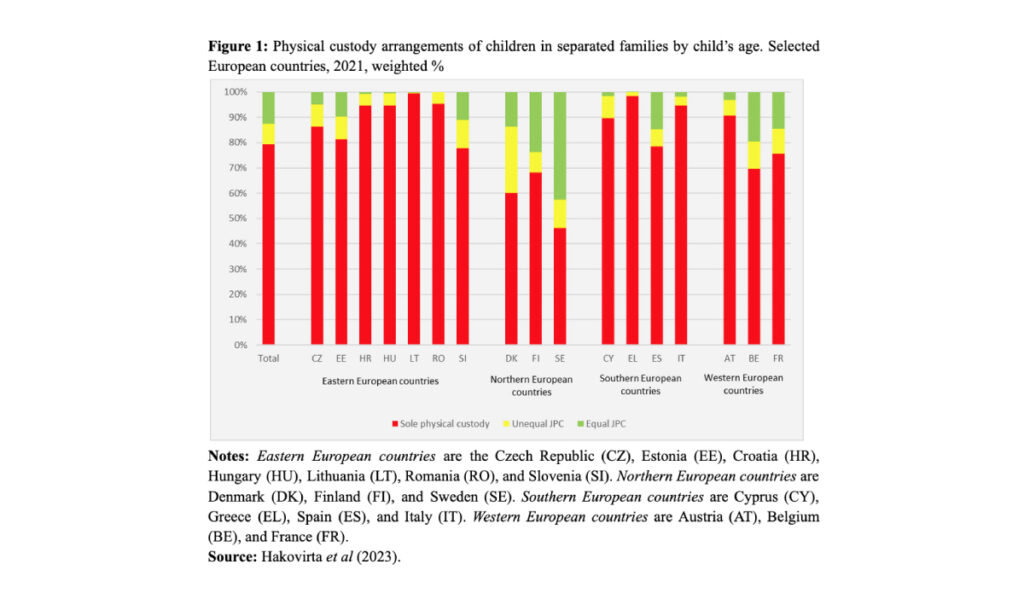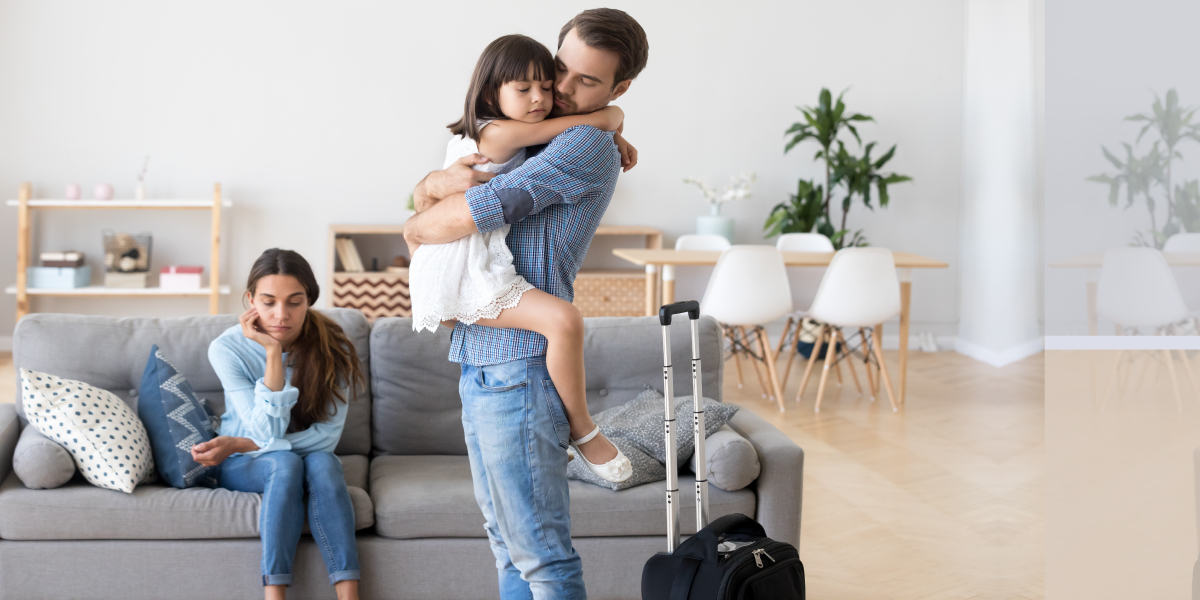As union dissolution becomes more frequent around the world, the living arrangements of children of separated parents have become an important issue. Joint physical custody (JPC) is believed to be the best solution for them, and probably also for their parents. Mia Hakovirta, Daniel R. Meyer, Milla Salin, Eija Lindroos and Mari Haapanen study the prevalence of JPC in European countries.
A growing number of children are affected by parental divorce or separation. When parents do not live together, the children’s living arrangements (physical custody) are determined either by the parents themselves or by a family court. For much of the last century in Europe, physical custody was typically awarded solely to the mother, with some fathers being awarded limited scheduled visits. Policies then changed to give fathers more time with their children and to give parents the possibility of joint physical custody (JPC, also known as shared care). Nowadays, children can live primarily with their mother or father (an arrangement called sole physical custody, or SPC) or can spend substantial time with both (JPC). Although some scholars restrict the definition of JPC to cases where children spend exactly half of their time with each parent, in a recent paper we decided to use a broader definition, including cases where children spend at least a third of their time with each parent (Hakovirta et al 2023).
Practicing joint physical custody (JPC) has been linked to several positive outcomes for children and parents, such as better co-parenting and less inter-parental conflict (Augustijn 2023). For children, JPC is associated with better socio-emotional and psychological well-being, as well as lower levels of stress (e.g. Nielsen 2018, Steinbach 2019, Turunen 2017). In addition, some studies indicate that mothers’ well-being and life satisfaction are higher under JPC than under sole physical custody (SPC) (Augustijn 2023).
In our study, we use European Union Statistics on Income and Living Conditions survey data (EU-SILC) to describe levels and trends of JPC in several European countries. We break our results down by children’s age and by JPC type, equal or unequal, which is a novel contribution to the comparative literature. Under unequal joint physical custody, children spend 10 to 14 nights per month with one parent (and 16 to 20 nights per month with the other) while under equal joint physical custody the children spend 15 nights with both parents.
Results
Figure 1 shows children’s physical custody arrangements in 2021. Across Europe, 12.5% of children in separated families lived in equal JPC arrangements, 8.2% lived in unequal JPC arrangements, and 79.3% lived in the more traditional sole physical custody arrangement.

Even though direct comparisons with previous studies are not possible, our results show a significant increase in the prevalence of JPC in less than 20 years. Substantial cross-national variation exists. Equal JPC is most common in Sweden (42.5% of children in separated families), followed by Finland (23.8%) and Belgium (19.6%). More than one in ten children in separated families in Slovenia, Denmark, Spain, and France live under this type of arrangement, but only, 5% or less in nine countries (Czech Republic, Croatia, Hungary, Lithuania, Romania, Cyprus, Greece, Italy, Austria). Unequal JPC arrangements are most common in Denmark (26.2%), followed by Sweden (11.2%), Slovenia (11.1%), and Belgium (10.7%).
Table 1 breaks down these results by children’s age. Sole physical custody is more common for the youngest (0–5 years) and the oldest (16-17 years) children, reaching 84.8% and 82.5% respectively. JPC is more prevalent at the intermediate ages (6 to 15), especially the equal type, accounting for 13 to 16% of the total.

Discussion
JPC is becoming more common: we estimate that it concerned 13.0% of children aged 11–15 not living with both parents in 2021, compared to 5.7% in 2002–2010.
The rate of equal JPC is highest in mid-childhood, at ages 6 to 10, with lower rates for younger and older children, especially those aged 16–17. This is the expected pattern if we presume that young children are more in need of residential stability (or more in need of maternal attachment) and older children want fewer residential transitions to facilitate peer relationships.
In all age groups, and considering unequal as well as equal JPC, we see substantial variation across countries, with clear regional differences. Consistent with prior studies we find that in Northern European countries – Belgium, France, Spain, and Slovenia – children are more likely to experience JPC. Traditions and legal contexts differ across countries: for example, in Belgium and Spain, JPC has been the presumptive arrangement for at least the past decade.
Even though some countries have substantially more JPC than others, our results show that the overall increase in JPC is a widespread phenomenon. In eight countries for which there are data from 2002–2010 in Steinbach and colleagues (2021), and for which we have sufficient numbers of children aged 11–15 to make indicative comparisons, equal JPC arrangements have increased. Only in Hungary and Italy have they declined, and in both of these countries equal JPC is quite uncommon (2.5% and 2.8% in the early data and 0.5% and 1.9% in recent data). In several countries, increases are large, with rates doubling or more in Croatia, Estonia, Finland, Spain, and Sweden.
These changes are substantial, and may have widespread implications for the lives of these children and their parents. Whether social policy has kept pace with this new reality is a matter of debate.
References
Augustijn Lara. (2023). Post-separation care arrangements and parents’ life satisfaction: Can the quality of co-parenting and frequency of interparental conflict explain the relationship? Journal of Happiness Studies 24: 1319–1338.
Hakovirta Mia, Meyer Daniel R., Salin Milla, Lindroos Eija and Haapanen Mari (2023) Joint physical custody of children in Europe: A growing phenomenon. Demographic Research 49(18): 479–492.
Nielsen Linda (2018). Joint versus sole physical custody: Children’s outcomes independent of parent–child relationships, income, and conflict in 60 studies. Journal of Divorce & Remarriage 59(4): 247–281.
Steinbach Anja (2019). Children’s and parents’ well-being in joint physical custody: A literature review. Family Process 58(2): 353–369.
Steinbach Anja, Augustijn Lara and Corkadi Gerrit (2021). Joint physical custody and adolescents’ life satisfaction in 37 North American and European countries. Family Process 60(1): 145–158
Turunen, Jani (2017). Shared physical custody and children’s experience of stress. Journal of Divorce & Remarriage 58(5): 371–392.

